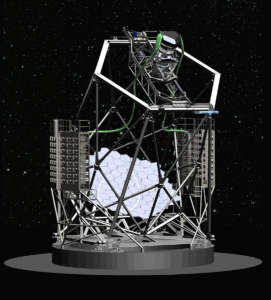Astronomers have barely scratched the surface of mapping the nearly endless stars and galaxies of the heavens. Using supercomputers, researchers with The University of Texas at Austin have now revealed the locations of more than 200,000 new astronomical objects. Their goal is to map even more and use that knowledge to predict the ultimate fate of the universe.
The Hobby-Eberly Telescope Dark Energy Experiment (HETDEX) has scanned the dark skies of the Davis Mountains in West Texas since 2017 with a keen eye toward capturing spectroscopic data on Lyman-alpha frequency light from neutral hydrogen emission in galaxies over 10 billion light-years away. These galaxies emit a signature wavelength of light that signals the intense creation of new stars.

For the first time, the researchers have cataloged astronomical objects - mapping over 51,863 Lyman-alpha-emitting galaxies at high redshift; 123,891 star-forming galaxies at lower redshift; 5,274 nonemission line galaxies at low redshift; and 4,976 active galactic nuclei (AGN) - bright spots that signal the presence of black holes.
"This new catalog adds valuable data in finally answering the 'million galaxy' question, which is something the HETDEX Collaboration is working very hard on in the coming year," said study co-author Karl Gebhardt, the Herman and Joan Suit Professor in Astronomy who is project scientist and principal investigator of HETDEX. "We wouldn't be able to do this work without the supercomputing resources and experts at the Texas Advanced Computing Center, through allowing us the computing power to run many analyses of the data and continue to improve the process."
The paper describing the catalog is published in The Astrophysical Journal. The HETDEX Collaboration involves a large team including astronomers, engineers, technicians and graduate students from UT Austin and five other academic institutions in the United States and Germany.
HETDEX used the Maverick and Stampede2 supercomputers of the Texas Advanced Computing Center, a leading academic supercomputing center at UT Austin. They helped process and analyze about 60 terabytes of image data on TACC's Corral system.

A star's redshift tells astronomers how fast a star is moving away from the Earth because its frequency, akin to its color, gets lower as it moves away, much like the horn of a train as it passes by.
The faster a star moves away, the farther away it is. That relationship between speed and distance, called Hubble's Law, can pin down a galaxy's location and allows astronomers to create a 3D map of over 200,000 stars and galaxies with HETDEX.
The researchers worked with TACC to create JupyterHub public access to the data.
The science generated from HETDEX adds to the bigger picture of understanding the expansion of the entire universe, which is growing much faster than expected, based on precise observations from the Hubble Space Telescope in 2019 of supernovae that act like a cosmic yardstick. HETDEX aims to create an accurate measure of what the universe expansion rate was 10 billion years ago that will reveal the physical model for dark energy.
Highlights:
- The Hobby-Eberly Telescope Dark Energy Experiment (HETDEX) team announced its first publicly released catalog of astronomical objects.
- Over 200,000 astronomical objects, including distant stars and galaxies, have been mapped in 3D for the first time.
- Astronomers will use the data to better determine the Hubble constant, used to gauge the expansion of the universe.
- A possible "naked black hole" is an early highlight of science results from HETDEX survey.
- TACC systems Corral, Stampede2 and Maverick were used in the data analysis and storage.
- Data is publicly available through JupyterHub notebooks.






